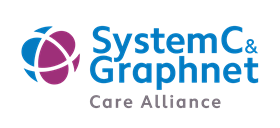EPRs that are custom designed for ICSs and the NHS are vital for collaborative, data driven, preventive and supportive care. By Dr Jonathan Bloor
Electronic patient records are back in the spotlight. Not that we’re surprised. Digitisation has been a recurring theme since System C was founded in the UK 40 years ago. Initiatives have come and gone, such as the Radical Modernisation Programme for the NHS back in 1998, which talked about getting EPRs into every hospital.
Sponsored by
Now, we’re seeing another wave of activity. This includes health and social care secretary Sajid Javid setting new targets for the adoption of EPRs, asking for “90 per cent of trusts to be at Level 5 on the HIMSS maturity model by December 2023, with the other 10 per cent well on the way to deploying an EPR.”
It’s reminiscent of what we’ve heard before, but it feels like the conversation is different this time – and integrated care has a lot to do with that.
We’re moving into an era of improved collaboration, more local and supplier input, and opportunities to think beyond the hospital walls, joining up care across multiple settings. The providers that see the most success will be the ones that are well prepared and open to new ways of working.
Six considerations for digitisation
Accepting the need for digital transformation is one thing but putting that into practice is never as straightforward. It can be useful to take a step back to consider what needs to be done for providers to move forward.
1) Recognise that integrated care systems are important because patients are important and have needs that span multiple providers. We need to embrace the opportunities that ICSs give us to join up teams across care communities.
2) But organisational sovereignty cannot be superseded by ICS structures. There are many things that must be done at a trust level. We can’t lose sight of that.
3) Providers within an ICS do not need the same IT system. Instead of replacing systems that are working well, we should be looking at collaboration tools that run across the various local provider systems.
4) Health and social care providers need to collaborate. Integration and IT systems are required to support that.
5) We must go paperless and with today’s technology, that is achievable.
6) There is as much work to be done on change management as on the provision of IT solutions.
People instead of locations
To help ICSs deliver, we need to start focusing on the person being cared for, and the team around them, rather than location. This is where a fully mobile, cloud-based, interoperable EPR can bridge the gap. When information can be seamlessly shared with a person’s entire care team, wherever they are, it facilitates a far more effective and efficient level of care coordination.
St Helens and Knowsley Teaching Hospitals Trust has been spearheading this approach. Not only has the trust used clinical modules from their CareFlow EPR to replace paper-based processes and improve the patient experience within the hospital, but it has also been incorporated into the Cheshire and Merseyside ICS’s wider strategy of providing improved, joined up health and care services to local residents.
Data from the EPR feeds into the St Helens Shared Care Record, providing information such as outpatient appointments, inpatient stays and clinical contacts, referrals and discharge information, and test results. This gives health and social care providers access to the most up to date information, ensuring that patients receive the most appropriate treatment and support when they need it.
Remote monitoring – the future of care
Remote monitoring and virtual wards are legacies of the pandemic, and we are now seeing their potential across ICSs, with all settings involved, from acute to mental health, and social care.
Integrated into EPRs, remote monitoring technology allows for long-term conditions to be managed at home, including respiratory, cardiac, diabetes and motor neurone disease. ICSs are already seeing a positive impact on backlogs and staff pressures, and those integrating with population health platforms are also finding it easier to identify the cohorts that are most suitable for remote monitoring.
Frimley Health and Care ICS, for example, has worked with Docobo, Graphnet and local providers to implement Docobo’s remote monitoring solution across Berkshire, in order to monitor patients at home with long-term conditions who have tested positive for covid. The solution has now supported over 3,000 patients across the Frimley area. Specific benefits so far have included reduced readmissions to hospital, reduced ambulance call-outs, admission avoidance and earlier discharge, improved patient care, and the ability to care for more patients with fewer clinicians.
Change happens – we need to adapt quickly
The new way of working is one that is collaborative, data driven and with a focus on prevention and early support. EPRs that are custom designed for ICSs and the NHS are a vital piece of the puzzle. Integrated care is here to stay, providing us with opportunities that we can’t ignore. It’s not about getting rid of the systems that we have, but building on them, and devising new ways to work together across care communities. While the conversations we’re having about digitisation are familiar, it does feel like we’re at a crunch point. We need to adapt quickly or run the risk of being left behind.
Read more here.































